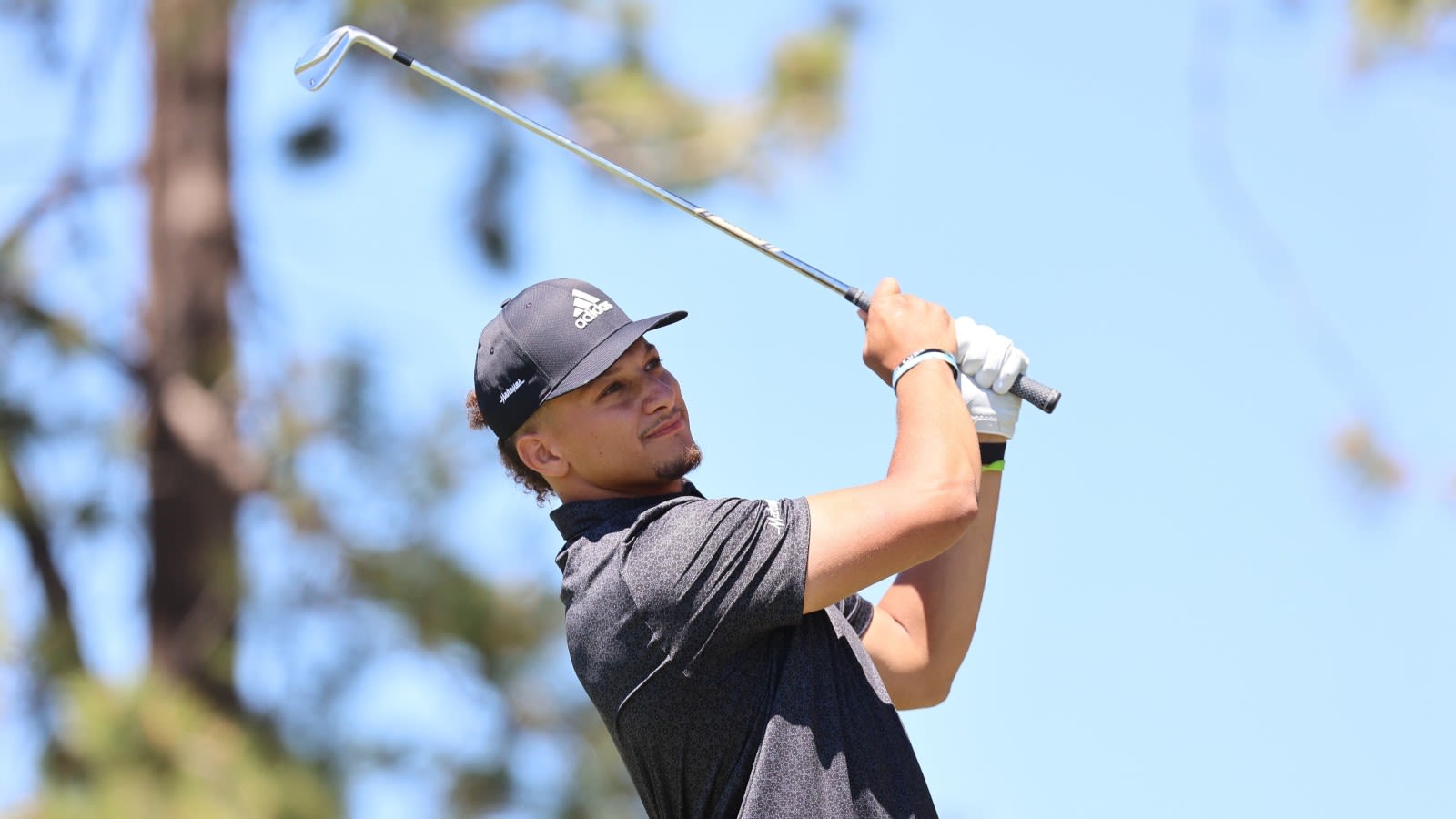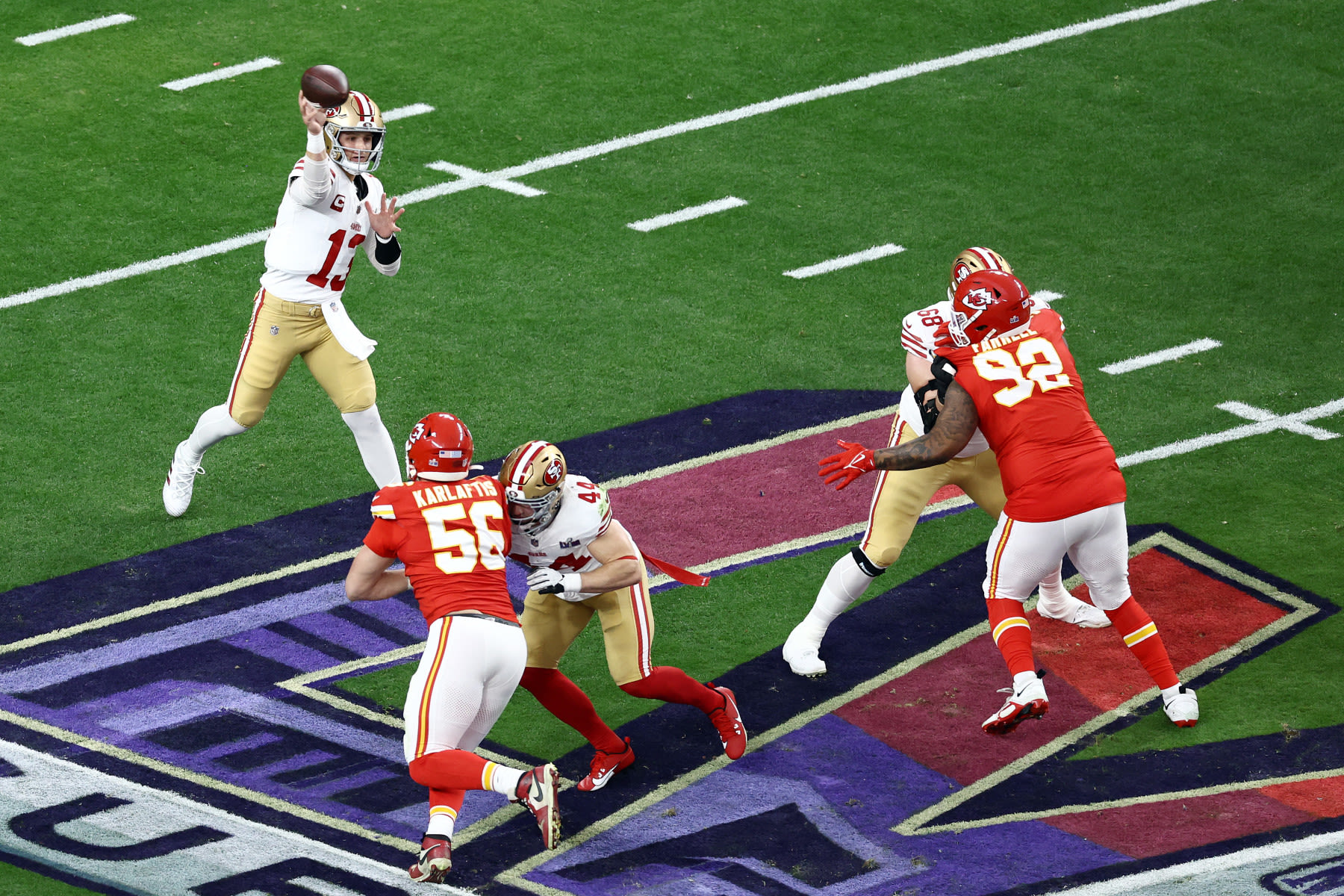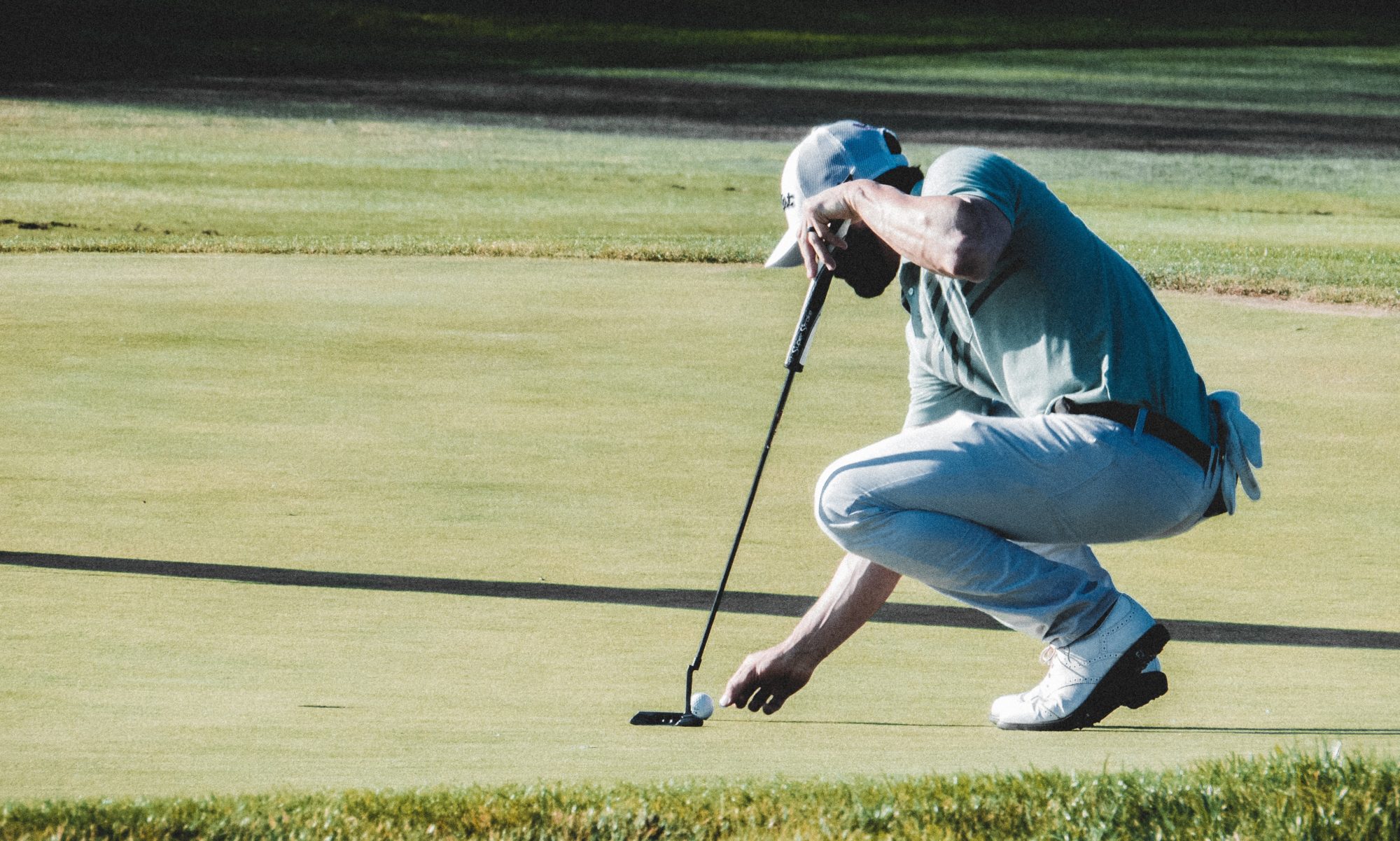QUICK COACHING
A Swing Tip You Can Learn From the NFL Quarterbacks Who Played in the Super Bowl
By Ryan Adams, PGA
Published on Sunday, January 28, 2024

A thrilling match-up for Super Bowl LVIII in Las Vegas on Feb. 11 ended as it should.
With drama.
The Kansas City Chiefs won their second straight Super Bowl, defeating the San Francisco 49ers 25-22 on a short pass play in overtime. The game was fun to watch, with high-flying offenses, stout defenses, plenty of storylines . . . and how could we forget Taylor Swift?
Believe it or not, though, there’s also a little golf lesson you can learn from the quarterbacks playing in today’s game.
Did you see how Patrick Mahomes (above) of the Chiefs and Brock Purdy of the 49ers were making their throwing motions? Well, there’s a lot of similarities between the way these quarterbacks sling it and how to create more powerful strikes with every club.
Let’s break it down.
Wind up and weight transfer
The first step for a quarterback is winding up their upper body and then transferring weight to the front foot to fire a pass. That’s a lot like the golf swing if you think about it: You make a full turn and then transfer your weigh to the lead side to maximize power. Look at Mahomes below as he steps into a pass:

He can’t make this throw without transferring his weight to the lead side. When they weren’t under pressure during the Super Bowl, Mahomes and Purdy started throws by stepping into them, and not hanging back. When you hang back on your trail side, there’s no energy going to the ball (or in the quarterbacks’ case, the pass) which makes it harder to create good contact.
Try this: Make practice swings with a full turn (shoulder under chin) and then on your downswing, take a step with your lead foot like you’re throwing a football or baseball. You’ll understand the proper sequence a lot better.
Unwind the lower body
Once you’ve made that first step, it’s time to unwind the lower body. You’ll see in the Super Bowl that the quarterbacks create space with their lower body by opening their hips and firing through with their upper body. Without that, it’s nearly impossible for them to make a proper move and throw the ball. Look at Purdy unwindingfor a big throw here:

Same goes for your golf swing. There’s no way for you to hit the ball squarely without unwinding and rotating your hips to clear out space for the arms, hands and club. Not only are you clearing out space but because you made that move we described above in the first step, your sequence is right on and that means really good contact with the ball.
Try this: To understand this hip clear-out, get in stance and then take your lead hand and press it into your lead hip. You should feel an open rotation, or a “clearing out” of your lower body. Another way to think about this is if you had a belt on and tugged it with your lead hand. Attempt hitting a few half shots with this idea in place with your wedges.
Hopefully this two-part tip is something that will help you, like it helps these great quarterbacks on the NFL’s biggest stage.


